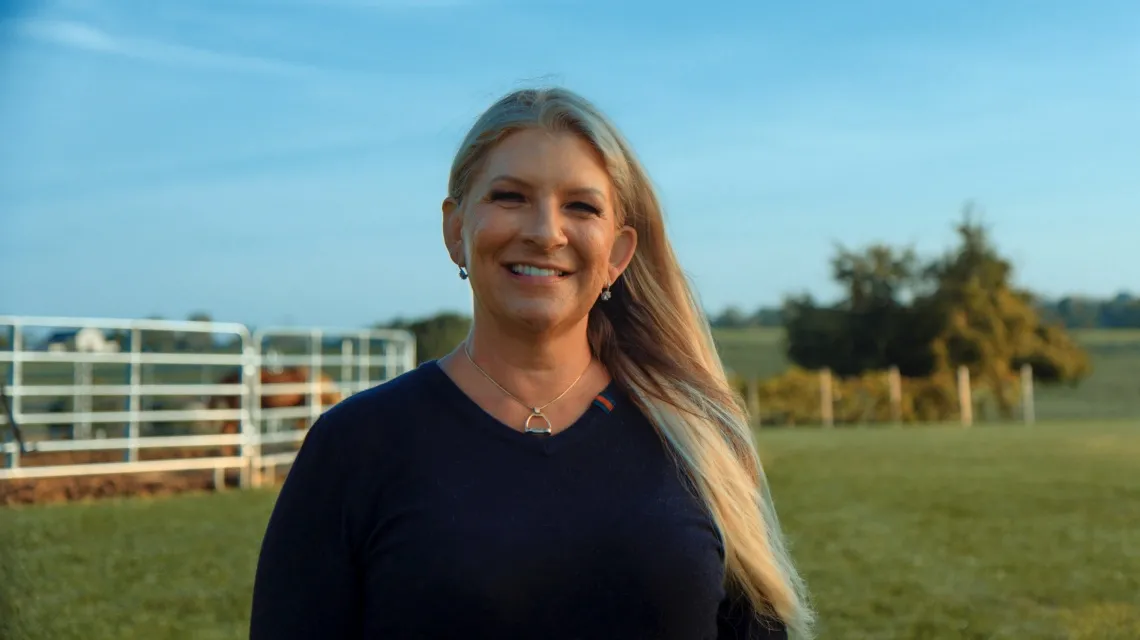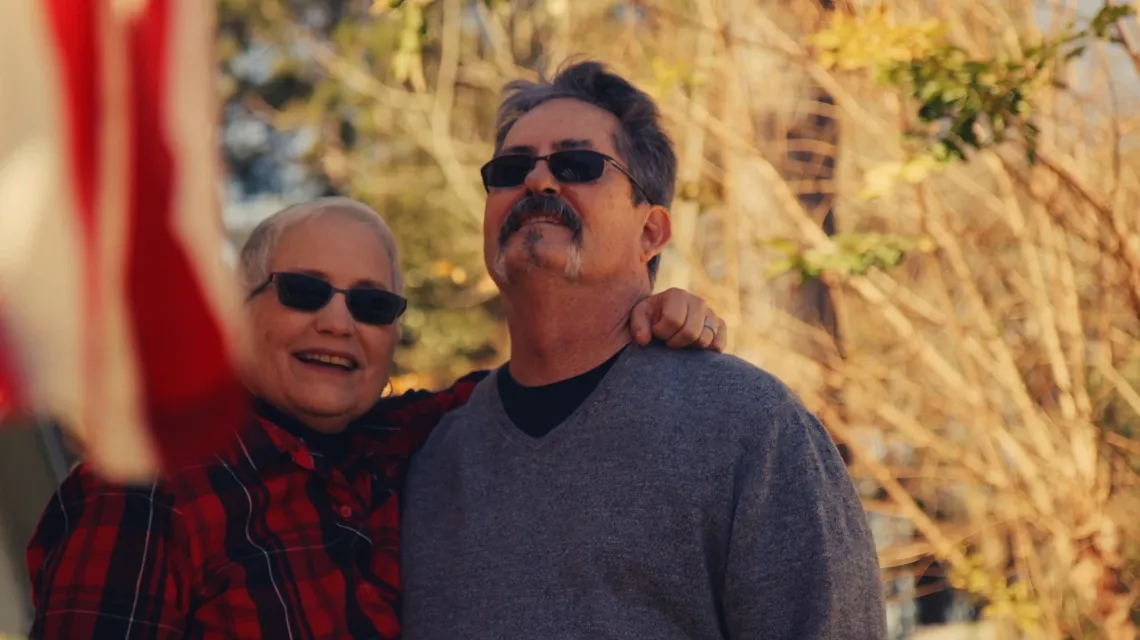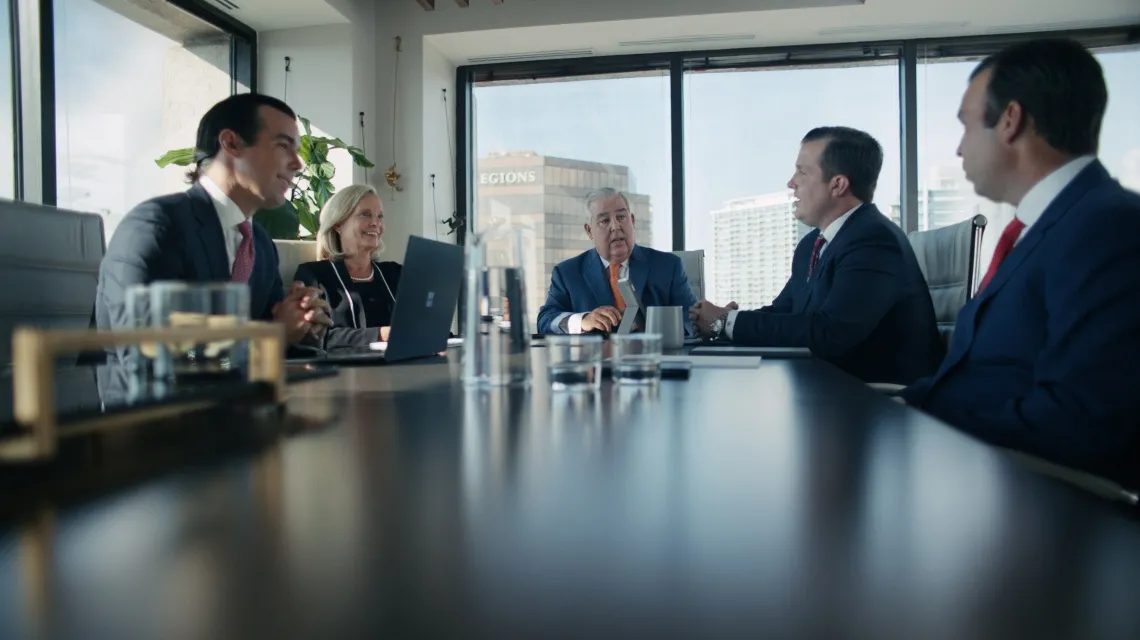Cases will be handled by attorneys licensed in the local jurisdiction. Cases may be associated with, or referred to, other law firms as co-counsel or referral counsel. Results may vary depending on your particular facts and legal circumstances. The attorney featured above is licensed in Florida. For a full list of attorneys in your state please visit our attorney page.
Slip & Fall Claims in Vermont
Whether you were injured at a local shop or a major retailer, our lawyers have the experience to handle cases of all sizes and fight for victims of a slip and fall.
Cases will be handled by attorneys licensed in the local jurisdiction. Cases may be associated with, or referred to, other law firms as co-counsel or referral counsel. Results may vary depending on your particular facts and legal circumstances. The attorney featured above is licensed in Florida. For a full list of attorneys in your state please visit our attorney page.
Vermont Personal Injury Lawyers
We’re proud to fight for our neighbors. Meet the attorneys from your community.
100,000+ Five Star Reviews
The reasons why clients trust Morgan & Morgan.
Based on select nationwide reviews.
Results may vary depending on your particular facts and legal circumstances.
Our Results
Results may vary depending on your particular facts and legal circumstances.
How It Works
Focus on your recovery. We'll take care of the rest.
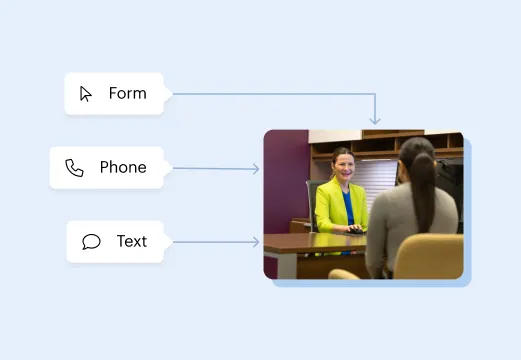
Submit your free evaluation
Start your claim
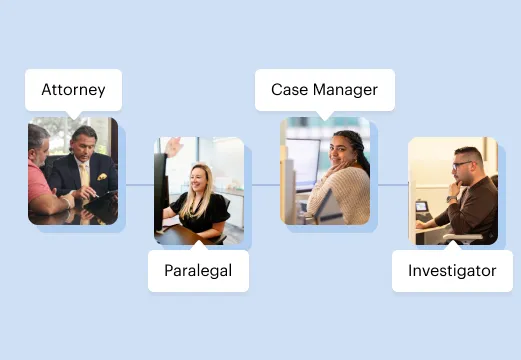
Meet your legal team
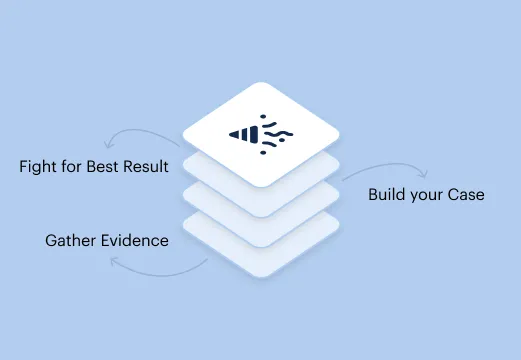
We fight for more
Results may vary depending on your particular facts and legal circumstances. The attorneys shown in these photos may not be licensed in your state. To find an attorney licensed in your area, please visit our attorney page.
Local Care
Backed by America’s Largest Injury Law Firm.
$25 Billion
Recovered for clients
nationwide700,000+
Clients and families
served1,000+
Attorneys across
the country1
Click may change your life
The attorney featured above is licensed in Florida. For a full list of attorneys in your state please visit our attorney page.
Results may vary depending on your particular facts and legal circumstances.
Learn More
Injured and not sure what to do next? We'll guide you through everything you need to know.
Get answers to commonly asked questions about our legal services and learn how we may assist you with your case.
How do I know if I have a slip and fall claim in Vermont?
Every slip and fall case is different, but in all personal injury claims in Vermont, there are a few elements that we look at to see if you have a case. We check to see if:
- There were damages. In Vermont, personal injury lawsuits are pursued to recover "damages," including medical expenses, lost wages, and pain and suffering. To be eligible for a lawsuit, the injury must involve substantial associated costs, which can vary by state.
- Someone else was at fault. To get compensation from someone else’s insurance company in Vermont, they must have acted negligently in a way that caused or contributed to your injuries.
- There’s enough insurance coverage. Personal injury lawsuits in Vermont are usually filed against insurance companies, not individuals. Those responsible must have enough insurance coverage to cover the injured person’s medical expenses or fully compensate them for their injuries.
If you are unsure if you have a case in Vermont, contact us. We're here to help.
What should I do immediately after a slip and fall accident in Vermont?
If you’ve been injured in a slip and fall accident in Vermont, you should first and foremost seek medical attention. Your health should be your top priority. Even if your injuries seem minor, get checked by a doctor, as some injuries may not appear immediately.
If you’re at a business or commercial property, notify the manager or property owner and request an incident report. Also, take photographs or videos of the scene, especially the hazard that caused your fall. If anyone saw the accident, get their contact details; their testimony may be important later.
While recovering from your injuries, document your medical treatment, missed work, and other ways the injury has impacted your life.
Another crucial step is consulting an attorney in Vermont. An experienced personal injury lawyer can help navigate the legal process and safeguard your rights.
How long after a slip and fall accident can I file a claim in Vermont?
The statute of limitations is a legally defined time limit for how long someone has to file a lawsuit. This varies depending on your type of case and your state.
If you’ve experienced a slip and fall in Vermont, filing your claim within the required period following the accident is important. Missing this deadline may affect your ability to seek compensation.
However, it’s best to consult with an attorney in Vermont as soon as possible after the incident, as gathering evidence and building a case can take time. Your attorney can also assist you with filing everything correctly and on time.
How long does it take to resolve a slip and fall claim in Vermont?
The time it takes to resolve a slip and fall case varies based on factors like the case's complexity, the severity of your injuries, and whether the property owner’s insurance company agrees to provide full and fair compensation.
Some cases are settled within a few months, while others may take a year or more if litigation is required. At Morgan & Morgan, we aim to resolve cases efficiently while fighting for maximum compensation for our clients in Vermont.
Our army of over 1,000 trial-ready attorneys is prepared to fight to the very end for the compensation our clients in Vermont need and deserve to move forward with their lives. When you work with Morgan & Morgan, your attorney will keep you informed about the progress of your case at every step of the way.
Why should I hire Morgan & Morgan in Vermont?
At Morgan & Morgan, our skilled slip and fall attorneys have successfully represented numerous clients in Vermont and similar cases, recovering millions in compensation. As the country's largest personal injury law firm, with over 1,000 lawyers nationwide, we have the resources, knowledge, and dedication to fight for your rights.
We work on a contingency fee basis, meaning you won’t have to pay unless we win your case. Morgan & Morgan believes justice should be accessible to all, so our motto is the Fee Is Free™—you only pay if we win.
We take pride in ensuring that negligent property owners in Vermont are held accountable for the harm they’ve caused. Don’t bear the burden of your injuries on your own because of someone else’s negligence. Contact Morgan & Morgan in Vermont today for a free case evaluation to learn more about your legal options.
How much does it cost to hire Morgan & Morgan in Vermont?
Morgan & Morgan's slip and fall attorneys in Vermont operate on a contingency fee basis, meaning you won’t face any upfront costs or expenses until your case is resolved. That’s correct—the Fee Is Free™, so you only pay if we win. Our fee is a percentage of the settlement or verdict, ensuring we fully commit to securing your best possible outcome.
What compensation can I recover for a slip & fall claim in Vermont?
The compensation available in a slip and fall lawsuit depends on various factors, such as the severity of your injuries, medical costs, and the overall impact on your life. Typically, compensation can include coverage for medical expenses, lost wages due to missed work, financial relief for physical and emotional pain and suffering, reduced quality of life, permanent disability, or even future loss of earning capacity.
Every case is unique, so the amount of compensation can differ. An experienced attorney at Morgan & Morgan in Vermont can evaluate your case and better understand what you may be entitled to. Take advantage of a free case evaluation to learn more.
Do I have to pay for a consultation with a slip & fall lawyer in Vermont?
No. At Morgan & Morgan in Vermont, consultations are free. We believe everyone deserves access to legal advice, regardless of their financial situation. Hiring one of our slip & fall lawyers is easy, and you can get started in minutes with a free case evaluation on our site or by phone.
Who will be on my slip & fall case team in Vermont?
When you hire Morgan & Morgan, you don’t just hire a lawyer; you hire the largest personal injury law firm in the country with an army of over 1,000 lawyers and offices across all 50 states and Washington, D.C. Your case in Vermont will be handled by a dedicated team of professionals, including personal injury lawyers, paralegals, and support staff. You will be assigned a care team with a primary attorney overseeing your case and ensuring you receive personalized attention.
When do I meet with my slip & fall lawyer in Vermont?
After your initial consultation, your care team will schedule regular meetings to discuss your case, provide updates, and prepare you for upcoming proceedings. We are committed to maintaining open lines of communication and keeping you informed every step of the way. Depending on your case’s requirements and your ability, these meetings can be conducted in person, virtually, or by phone.
Can I sue my landlord for a slip and fall claim in Vermont?
What happens if you slip and fall in your apartment building in Vermont and sustain an injury? You might wonder if you can sue your landlord. This depends on the laws in Vermont.
In general, landlords are responsible for keeping all common areas of a property reasonably safe. Like other property owners, if a landlord is aware of an unsafe condition or reasonably should have known about it but fails to address it, they may be liable for damages incurred by the injured party.
Proving this depends on the circumstances of each case. To determine this, courts will consider factors such as the length of time the unsafe condition existed and the severity of the hazard. In certain circumstances, landlords can also be liable for slip and falls in a tenant’s apartment.
When a new tenant moves into a Vermont apartment, the landlord must inform the tenant of any known defects on the premises. The failure to notify a tenant of defects that the tenant could not have discovered during a reasonable inspection of the property could mean the landlord is liable if a slip & fall accident occurs. Also, a landlord may be liable for slip and falls within a tenant’s apartment when a building code or ordinance is violated. As always, it depends on the circumstances of the case and local Vermont laws.
Can I file a slip and fall lawsuit against a business in Vermont if I didn’t report it immediately?
You can still file a lawsuit in Vermont even if you didn’t immediately report the slip and fall accident. However, reporting the incident as soon as possible strengthens your case, creating an official record of what happened. If you didn’t report it immediately, you’ll need to provide other compelling evidence to support your claim, such as witness statements from people who saw the accident, medical records that tie your injury directly to the fall, or photographs or videos showing the hazardous condition.
A Morgan & Morgan attorney in Vermont can help you gather the necessary evidence and build a strong case, even if you delayed reporting the incident.
Who is responsible if I slip and fall at an Airbnb in Vermont?
Airbnb is a popular alternative to traditional hotels and other standard accommodation options for travelers worldwide, including those visiting or staying in Vermont.
Staying in homes and other properties listed on the service is often more affordable than hotels or resorts, but what happens if you or your family get hurt at someone else’s property? Whose insurance covers your slip and fall accidents?
Airbnb is known for providing its hosts with Host Protection Insurance, which is the primary insurance policy in effect for hosts during a guest’s stay and carries $1 million worth of coverage per stay. If you’re injured on a host’s property, you’d likely seek compensation for your medical bills and other expenses from Airbnb’s insurer. Airbnb’s million-dollar insurance policy applies on a per-occurrence basis for an accident involving bodily injury or property damage, according to Airbnb materials on its site.
Can I file a slip and fall lawsuit if my injury occurred on government property in Vermont?
If you were injured in a slip and fall on government property in Vermont, you can file a lawsuit, but there are extra steps to follow. First, you must submit your claim notice to the government. You may file a lawsuit if they deny your claim or don’t respond. Because the process is more complex than regular slip and fall cases, it’s a good idea to talk to an attorney with experience with these types of claims.
When do slip and fall accidents happen in Vermont?
Trip, tumble, slip, and fall accidents can happen anywhere —from grocery stores and shopping malls to sidewalks and workplaces. Understanding the most common causes can help victims recognize when they may be entitled to compensation.
Wet or Slippery Surfaces: The most common cause of slip and fall accidents is wet or slippery floors. Water, oil, or other liquids—from spills, leaks, or cleaning activities—create hazardous conditions that catch people off guard. Businesses and property owners are responsible for ensuring that floors are kept dry or marked with warning signs when they’re wet.
Uneven Flooring or Sidewalks: Cracked, uneven, or poorly maintained flooring and sidewalks are frequent culprits in slip and fall accidents. These include torn carpets, broken tiles, unstable or loose floorboards, and even raised sidewalks due to tree roots and weathering. Property owners are expected to repair or mark uneven surfaces to prevent accidents.
Inadequate Lighting: Poor lighting can make it difficult for people to see obstacles, uneven surfaces, or wet spots, increasing the likelihood of a slip and fall. This is especially dangerous in parking lots, stairwells, hallways, entrances, and exits.
Poor property maintenance often results in inadequate lighting, and the property owner is responsible for ensuring that all areas are well-lit and safe for visitors.
Clutter and Obstacles: Debris, wires, merchandise, or other items left in walkways create tripping hazards in high-traffic areas. Property owners and employees must keep floors clear of obstacles.
Defective or Broken Staircases: Broken handrails, loose steps, or uneven stair heights are common causes of falls on staircases. Property owners and managers must ensure that staircases are maintained and compliant with safety codes to prevent accidents. A fall down stairs can lead to particularly severe injuries, such as head trauma or spinal damage.
Weather Conditions: Rain, snow, and ice can create hazardous conditions, especially when not properly managed. Icy sidewalks, slippery entryways, and rain-soaked floors increase the risk of slip and fall accidents. While property owners can’t control the weather, they are responsible for taking reasonable steps to minimize danger, such as shoveling snow, salting icy areas, and providing mats for wet shoes.
How can I hold a negligent property owner accountable in Vermont?
If you’ve been injured in a slip and fall or another accident on someone else’s property in Vermont, you have the right to hold the property owner accountable for their negligence. Property owners in Vermont are legally obligated to maintain safe premises, and when they fail to do so, they can be held liable for resulting injuries.
Premises liability law in Vermont ensures that property owners are held responsible for injuries caused by unsafe conditions on their property. This applies to various locations, including homes, businesses, apartment buildings, and public spaces. To succeed in a premises liability claim, you must demonstrate that the property owner’s negligence directly caused your injury.
You must demonstrate that:
- The property owner owed you a duty of care: This duty depends on your status as a visitor. For instance, customers in retail spaces are owed the highest duty of care, whereas trespassers typically receive less protection.
- They breached that duty: The property owner failed to fix or warn you about hazardous conditions, such as a wet floor or broken handrail.
- The breach caused your injury: There must be a clear connection between the unsafe condition and your injury.
- You suffered damages: You must show that your injury led to damages such as medical bills, lost wages, or pain and suffering.
To do this, gather evidence, such as photographs or videos of the hazard, witness statements, incident reports, and medical records from your injuries and treatment. Report the accident to the property owner to create a record of the incident. Finally, contact a slip and fall lawyer at Morgan & Morgan in Vermont.
Premises liability claims can be complex, and having an experienced attorney in Vermont by your side will increase your chances of a successful outcome. At Morgan & Morgan, we bring over 35 years of experience in handling premises liability cases, understanding what it takes to hold negligent property owners accountable. Our attorneys are dedicated to collecting evidence and building a strong case to demonstrate the property owner’s liability for your injury.
If negotiations with the property owner’s insurance company in Vermont don’t result in a fair settlement, your attorney may advise filing a premises liability lawsuit. This formal legal action seeks to hold the property owner legally and financially responsible for your injury. Compensation can cover various damages, such as medical expenses, lost wages from missed work, and pain and suffering.
How can a slip & fall injury impact your life in Vermont?
Although a slip and fall injury may initially seem minor, its consequences can be severe and long-lasting. These accidents often result in physical, emotional, and financial hardships, impacting nearly every part of your life. At Morgan & Morgan, we understand the significant effects of slip and fall injuries and are dedicated to helping victims of injuries in Vermont recover the compensation they deserve.
Physical Impact
A slip and fall injury's most immediate and noticeable effect is the bodily harm it causes. Injuries can range from minor bruises to severe, life-altering conditions, such as:
- Broken bones: Fractures in the arms, wrists, ankles, or hips are common, especially in older adults.
- Head injuries: Slip and fall accidents can result in traumatic brain injuries (TBI), concussions, or skull fractures, which may lead to long-term cognitive and physical impairments.
- Spinal cord injuries: A fall can damage the spine, leading to chronic pain, limited mobility, or even paralysis in severe cases.
- Soft tissue injuries: Ligament tears, sprains, and strains can cause ongoing pain and require months of rehabilitation. These injuries may require surgery, physical therapy, or extended hospital stays, disrupting your daily life and limiting your independence.
Emotional Impact
The emotional toll of a slip and fall injury can be just as significant as the physical damage. Victims in Vermont may experience:
- Anxiety and fear: After an accident, it’s common to feel anxious about walking in public places or even within your own home, fearing another fall.
- Depression: The loss of mobility or independence can lead to feelings of hopelessness and depression, especially if the injury prevents you from working or enjoying activities you once loved.
- Social isolation: If your injury limits your ability to engage in social activities, you may feel cut off from your community, contributing to loneliness and emotional distress. These emotional struggles are a legitimate and important part of the recovery process, and victims deserve compensation for the mental anguish caused by a slip and fall accident.
Financial Impact
The financial burden of a slip and fall injury can be overwhelming. Costs associated with medical treatment, rehabilitation, and long-term care add up quickly, and without adequate compensation, victims may find themselves facing serious financial difficulties. Key economic challenges include:
- Medical bills: Hospital visits, surgeries, physical therapy, medications, and ongoing medical care can quickly become expensive, especially if your injury requires long-term treatment.
- Lost wages: If your injury prevents you from working, you may lose weeks or months of income. In some cases, a victim may be unable to return to their previous job or may face reduced earning capacity due to injury.
- Rehabilitation costs: Long-term physical therapy, home modifications, and assistive devices (such as wheelchairs or walkers) can create additional financial stress. A successful slip and fall claim can help cover these expenses, allowing victims to focus on their recovery without the added burden of financial worry.
Impact on Quality of Life
A serious slip and fall injury can significantly reduce your quality of life. You may face challenges in performing daily activities, such as:
- Loss of mobility: Injuries like fractures or spinal damage can limit your ability to move freely or care for yourself.
- Chronic pain: Many slip and fall injuries result in ongoing pain that affects your ability to sleep, work, or enjoy recreational activities.
- Loss of independence: Some victims may need help with personal care or mobility, requiring them to depend on others or transition to assisted living facilities.
In some cases, these changes are permanent, and victims are left with a diminished quality of life that impacts their ability to engage in hobbies, maintain relationships, and enjoy their day-to-day experiences.
What kind of evidence do I need to prove a slip and fall accident was caused by negligence in Vermont?
To successfully prove that a property owner’s negligence caused your slip and fall accident in Vermont, you’ll need to gather solid evidence, including:
- Photographs or videos of the hazardous condition: Capture images of the wet floor, broken steps, uneven surfaces, or any other dangerous condition that caused your fall in Vermont
- Witness statements: Collect statements from anyone who saw the accident or can confirm the hazardous condition.
- Incident reports: If the accident happened at a business or other commercial property in Vermont, ask for an incident report and obtain a copy.
- Medical records: Ensure your medical records document your injuries, the treatment you’ve received, and how the injury affects your daily life.
- Maintenance logs or inspection reports: These reports can reveal if the property in Vermont was routinely inspected for hazards or if safety standards were disregarded.
This evidence can help prove that the property owner or manager failed to take reasonable steps to prevent accidents.
What should I do if the property owner in Vermont claims they were unaware of the hazardous condition that caused m
Suppose a property owner in Vermont claims they were unaware of the hazardous condition that led to your slip and fall. In that case, they can still be held accountable if negligence is established. Property owners are responsible for maintaining reasonably safe conditions, including regularly inspecting their premises for potential hazards.
To strengthen your case in Vermont, gather evidence such as:
- Photos or videos of the hazardous condition.
- Witness statements from others who saw the condition.
- Maintenance logs showing whether the property was regularly inspected and maintained.
If the hazardous condition had existed for a long time or was obvious, the owner’s claim of unawareness might not absolve them of responsibility.



